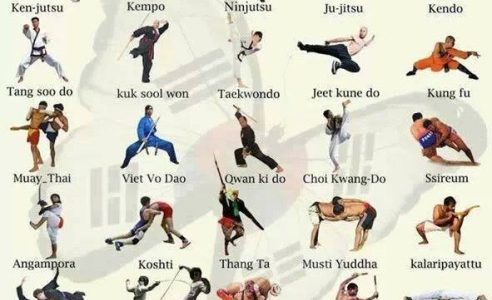Key Distinctions In Between Traditional Martial Arts And Modern Fight Sports: A Thorough Evaluation
Key Distinctions In Between Traditional Martial Arts And Modern Fight Sports: A Thorough Evaluation
Blog Article
https://trevorglrwc.bloggerchest.com/34998780/gaining-understanding-concerning-the-cognitive-and-affective-development-in-young-martial-artists By-Skovbjerg Brady
When you consider martial arts, do you lean more towards the conventional methods or the modern fight sporting activities? Each path offers one-of-a-kind advantages and experiences, shaped by their viewpoints and training techniques. Traditional martial arts emphasize personal growth and discipline, while modern-day combat sports focus on competition and efficiency. Recognizing Recommended Website can lead you in picking the ideal strategy for your journey. But how do these distinctions manifest in training and ideology?
The Viewpoint and Background Behind Typical Martial arts
While lots of people link martial arts with physical battle, the approach and background behind conventional martial arts run much deeper. You'll discover that these techniques emphasize individual growth, self-control, and respect.
Originating from ancient practices, conventional martial arts were usually developed for Self-Defense and spiritual growth. They embody concepts such as balance, harmony, and self-control, guiding practitioners past simple combating skills.
As you educate, you'll not only find out techniques yet likewise acquire understandings right into the society and values that shaped these arts. The rituals and customs, usually given with generations, cultivate a sense of area and belonging.
The Competitive Nature of Modern Fight Sports
Modern combat sports have changed the landscape of martial arts into a very competitive field, where professional athletes take on in an examination of skill, approach, and endurance.
You'll discover that competitors are often arranged with rigorous guidelines and policies, ensuring fair play and security. These occasions draw in big audiences, fueling the exhilaration and strength of competitions.
Athletes train carefully, not just for physical prowess however additionally for psychological sturdiness, understanding that every information counts in the ring. The adrenaline rush during competitors is palpable, as competitors press their restrictions to declare victory.
Followers value the athleticism and creativity entailed, making contemporary fight sporting activities a thrilling phenomenon that continues to develop and mesmerize lovers worldwide.
Training Techniques and Strategies: A Relative Analysis
The affordable environment of modern battle sports demands ingenious training approaches that vary substantially from typical martial arts.
In contemporary training, you'll concentrate on specific strategies, competing, and conditioning, frequently utilizing drills that replicate actual fight situations. You'll see a focus on quantifiable efficiency and frequent competition to evaluate your abilities.
On the other hand, typical martial arts prioritize types, katas, and philosophical teachings, usually stressing self-control and respect over competitors.
Training is usually much less intense and might entail recurring practice as opposed to real-time sparring.
While both methods develop ability and health and fitness, modern-day fight sporting activities provide a much more dynamic and adaptable training atmosphere, preparing you for instant challenges in the ring or cage.
Choose the path that aligns with your goals and rate of interests.
Verdict
In picking between typical martial arts and modern-day fight sports, it truly boils down to what you value the majority of. If you're trying to find individual development, technique, and a sense of community, traditional arts may be your finest fit. Yet if you thrive on competitors and real-time obstacles, contemporary battle sporting activities could be the means to go. Eventually, both courses supply special benefits, so it's all about straightening your training with your individual objectives and interests.
